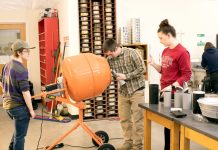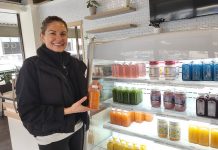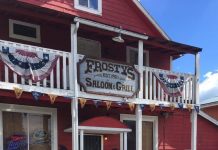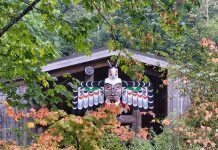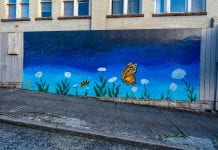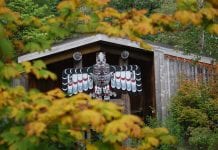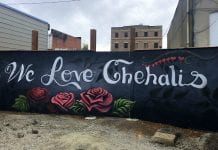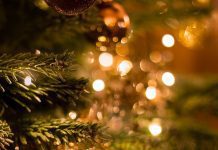Submitted by Chehalis Basin Lead Entity
Native Washingtonian Sabra Noyes, anticipating her retirement, in 2010 purchased 40 acres in Oakville near the Black and Chehalis Rivers. Now in 2021, the whole acreage is covered by a Conservation Easement with the Chehalis River Basin Land Trust. This means it will be protected in perpetuity as a wildlife sanctuary with restored prairie and savanna habitats.

Sabra has been actively restoring 20 acres. She also volunteers at Glacial Heritage Preserve, a restored prairie in Thurston County, where she learns about prairie habitat restoration.
In discussing her restoration efforts, “When I first bought this place, there was a fair amount of Scotch broom,” Sabra shared. “I was still working up in Kitsap County, so I would come down on the weekends, and for a year and a half, I worked to control invasive Scotch broom.”
“In some areas, I don’t mow the grass since the long grass is where you get your insects which feed the birds. There’s another section that I haven’t mowed because I have got Savannah sparrows,” said Sabra.
With a fall planting anticipated in the future, this pasture will be strictly for the pollinators. It attracts so many. There are gnats and flies — and the big bumblebee.”
Many new native birds have arrived on her land, as Sabra has installed over 30 bird boxes to attract the western bluebird, though none have shown up, but are used by tree swallows, violet-green swallows, and the largest swallow — the purple martin.
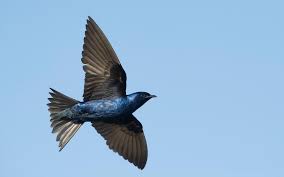
“Oh, the martins, the purple martins!” said Sabra. “There were no purple martins when I first came here. Many of the trees they used to nest in have been lost. I put up the first bird box, and violet-green swallows came and nested in it right away — they just needed the habitat. The following year, I had one purple martin come. So, I put up more and painted them whitish to discourage non-native starling occupation. Now there are five pairs!”
Once plentiful in western Washington, Purple martins now have only 5,000 breeding birds in Western Washington.
Sabra’s restoration efforts have benefited from the Sustainability in Prisons Project. Prisoners grow threatened prairie plants and raise threatened prairie butterflies. Balsamroot is grown as it is likely dependent on pollinators for reproduction. Because of the loss of bumblebees and honeybees — coupled with the loss of prairie habitat — this plant is now diminished.
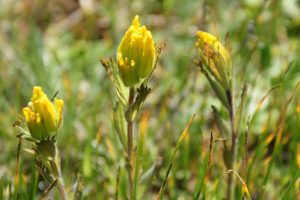
In the fall of 2019, Sabra got 196 of the balsamroot plants. “Last spring was the first year the cattle were used to graze down non-native grasses, so the plants were already growing,” said Sabra. “Balsamroots plants spend their first couple of years getting their roots down deep, so they must be nurtured. Once they’re established, they’re tremendously hearty,” said Sabra.
Native people and settlers used balsamroot for medicine and eating. Also recently planted by Sabra were several of the threatened golden paintbrush in her most undisturbed prairie habitat.
“I also have native Roemer’s fescue bunchgrass,” said Sabra. “Once common in oak savannas, it has been overtaken by invasive weeds and alarmingly diminished. Roemer’s fescue is a key native grass in the restoration of upland prairie and oak savanna habitat.”

Roemer’s fescue provides food or cover for various songbirds, small mammals, and beneficial insects and is a larval host to Mardon skipper, a rare PNW butterfly.
An invasive species that Sabra identified is the Tansy ragwort. “It will be coming out as it is so noxious to cattle and horses,” she said. Tansy is very noxious as all parts are toxic to cattle and horses when they ingest it while grazing or in hay. As a class B weed, if you have this on your property, you are required to control it.
Within her acreage, Sabra has a grassy swale that channels water during intense flooding events. The swale slows and infiltrates the water, which recharges groundwater — eventually making its way into the Black River and then into the Chehalis River.
“On three acres, I’m working with the Natural Resource Conservation Service (NRCS) to re-establish a Garry oak forest,” shared Sabra.
The PNW’s Garry oak ecosystems are among the most threatened ecosystems in North America. As Washington’s only native oak species, Garry oaks are a protected species locally and statewide. Forestry experts estimate that Garry oak habitat is only five percent of what it was before settlers.

Garry oaks offer shade, beauty, and small flowers – blooming in late spring – and provide for pollinators like native bees; its leaf buds are host to the larvae of various butterflies.
Studies show that the genus “Quercus, to which Garry oaks belong,” hosts more caterpillars and other insects than any other genus in the northern hemisphere. Birds feed their young, the highly nutritious larvae, adult insects, and spiders found on the oak — not seeds or fruit. Other studies show a higher diversity of bird species in oak forests than in nearby conifer forests.
For more information on planting native prairie species, check out Prairie Landowner Guide for Western Washington.
Prairie Appreciation Day — live — is happening again at Glacial Heritage Preserve. The date is Saturday, May 14, from 10 a.m. to 3 p.m. For more information, check the website.
“I learned so much about environmental stewardship from my father. He often planted daffodils in ditches,” shared Sabra.

“Nearby the Black River is a one hundred-to-two-hundred-foot buffer consisting of Oregon ash, a few cottonwoods, Pacific ninebark — my personal favorite — and other native trees and shrubs growing here,” said Sabra. “These plants feed wildlife. I have found bear scat and have heard several species of owls. In 2010, I even had a pair of Golden eagles here!”
Just “do it,” says Sabra to landowners who want to begin their own restoration projects. “You can start small. It doesn’t matter if it is a two-foot patch in your front yard — it matters.”
“Connect to any group, and you’ll get the support that you need,” added Sabra. “Additional organizations/agencies that I have worked with are the Center for Natural Lands Management, EcoStudies Institute, Friends of Puget Prairies, USFWS, the Audubon Society, and more.”
With her voice rich in emotion, Sabra reflected on why she works hard to restore the land. “Life is valuable. There needs to be safe places for the animals and plants.”
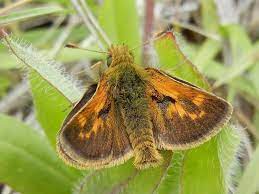
“If I accomplish nothing more than to have 90 percent of native plants out there,” she adds. “They are going to feed the insects, the microorganisms, and the birds. My desire is to do as much as possible while I’m living — so that this land will be viewed as an asset to perpetuate.”









